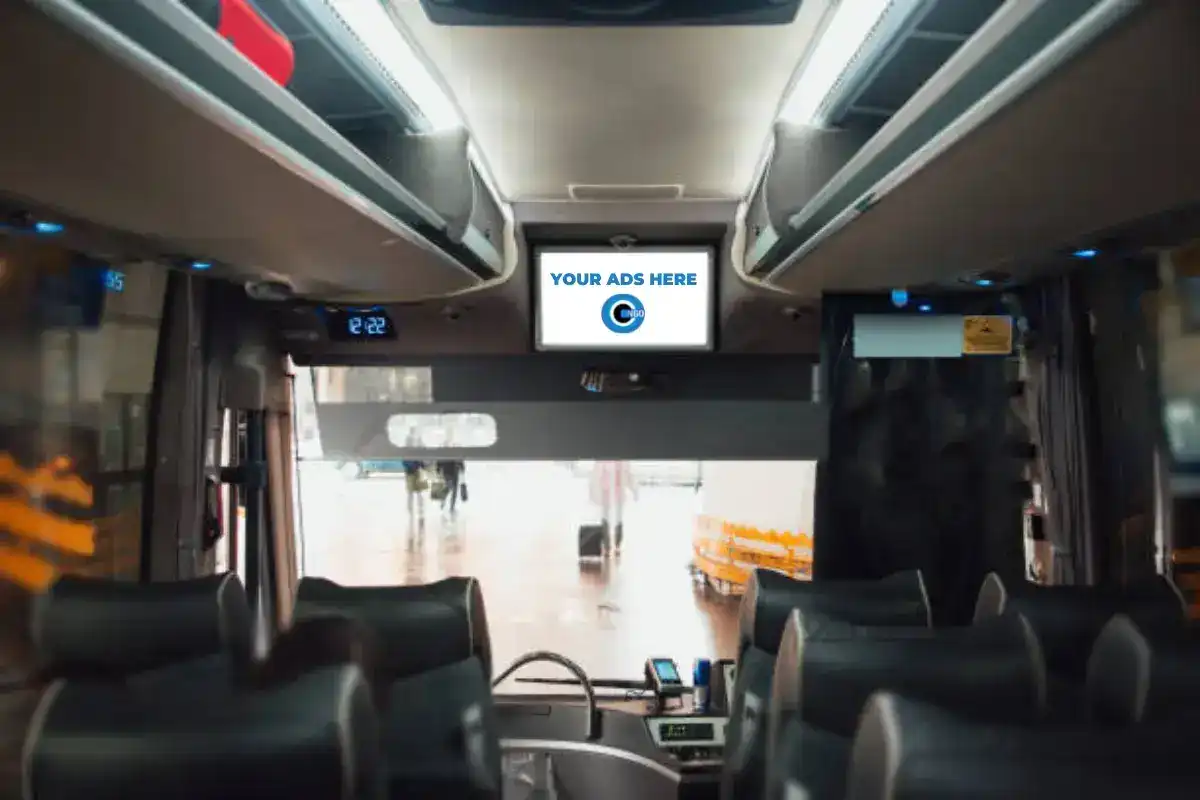Transit Advertising Philippines: Reach Hundreds Of Travelers Daily
Transit Advertising Philippines: Reach Hundreds Of Travelers Daily
Blog Article
Recognizing the Duty of Transportation Marketing in Enhancing Brand Exposure and Consumer Interaction
Transit marketing has actually become a crucial component in the advertising landscape, offering one-of-a-kind opportunities for brand names to boost their presence and involve consumers successfully. With the ability to reach a restricted and diverse target market throughout their everyday commutes, these advertising and marketing strategies are not simply concerning visibility; they have to do with creating purposeful connections with prospective customers. As we discover the multifaceted advantages and innovative strategies within transit advertising and marketing, it comes to be vital to think about exactly how these elements jointly affect consumer assumption and behavior, increasing concerns concerning their lasting influence on brand commitment.
Interpretation of Transportation Advertising
Transportation advertising describes the practice of promoting items, solutions, or brands with ads placed in and around public transport systems. This type of marketing encompasses a selection of positionings, including posters on buses and trains, electronic displays at transportation terminals, and wraps on the exterior of cars. It aims to reach a diverse audience, maximizing the high foot web traffic connected with public transportation.
Transportation advertising is tactically positioned to catch the interest of travelers, that commonly spend substantial time waiting or traveling. By integrating promotions into the day-to-day regimens of individuals, brand names can develop a long lasting impact and foster brand recognition. The tool is specifically efficient in urban settings, where mass transit is a main mode of travel.
Furthermore, transit marketing can assist in localized targeting, enabling companies to get to specific demographics based on transportation courses and station locations. As city populations expand and the usage of public transportation rises, this advertising and marketing method has actually gained prominence as a crucial element of integrated marketing strategies. The vibrant nature of transportation advertising, incorporated with its capacity to involve consumers in a restricted atmosphere, underscores its relevance in modern marketing methods.
Benefits of Transit Advertising
The effectiveness of transit advertising and marketing lies in its capacity to deliver a plethora of advantages to brand names seeking to enhance presence and engagement. Among the key advantages is the substantial reach it uses; transit advertisements can properly target diverse demographics throughout urban locations, reaching both commuters and pedestrians alike. This broad direct exposure significantly boosts brand recognition.
One more advantage is the high frequency of impacts. As transportation automobiles follow established courses and stop at several areas, they develop recurring exposure that enhances brand messages. This frequency cultivates knowledge, which is crucial in customer decision-making.
Transportation advertising and marketing is additionally affordable contrasted to various other media platforms. Offered its large reach and possibility for high perceptions, brand names commonly experience a lower cost per thousand impacts (CPM), optimizing their advertising and marketing budget plan.
In addition, transportation ads can create a sense of neighborhood link. By lining up with regional transportation systems, brands can reverberate with local audiences and promote a feeling of neighborhood satisfaction. This local technique boosts brand name loyalty and involvement, making transportation marketing an engaging option for companies aiming to strengthen their presence on the market.

Efficient Techniques for Transportation Projects
To optimize the effect of transportation campaigns, brand names ought to take advantage of critical planning and execution tailored to their target audience. First, determining the group features of the audience using public transit is important. This allows brand names to develop customized messaging that reverberates with possible customers.
Following, selecting the appropriate transportation tools is important. Whether making use of bus wraps, subway posters, or digital displays, each tool has special benefits that can enhance visibility. As an example, lively visuals on bus covers can stand out, while digital advertisements can be upgraded often to show prompt promos.
Moreover, incorporating a cohesive branding method across transportation platforms guarantees consistency and enhances the brand name's identity. Utilizing remarkable taglines and attractive designs will certainly reinforce brand recall amongst commuters.
By utilizing these methods, brands can efficiently harness the possibility of transportation advertising and marketing, promoting higher understanding and link with their target audience. Eventually, a well-executed transportation campaign can drive considerable growth in brand name exposure and customer engagement.

Gauging Influence and Interaction
In evaluating the effectiveness of transportation ad campaign, precise measurement of impact and engagement is vital for brands seeking to optimize their advertising strategies. Metrics such as reach, regularity, and impressions offer foundational data to analyze visibility. Analyzing these variables assists determine just how many possible customers are revealed to the promotions during their day-to-day commutes.
Engagement can be more assessed through customer interactions, such as internet site traffic, social media points out, and straight actions Going Here to calls-to-action featured in the advertisements. Utilizing tools like QR codes or unique URLs can facilitate tracking of consumer habits directly linked to transportation campaigns. Studies and responses systems likewise work as beneficial methods to collect qualitative data on customer assumptions and recall of the promotion.
Furthermore, progressed analytics and attribution versions can correlate transit exposure with succeeding purchasing actions, providing understandings into the return on investment. By utilizing a comprehensive approach that combines qualitative and quantitative actions, brands can establish a nuanced understanding of their transit advertising influence. Eventually, this data-driven method makes it possible for brand names to fine-tune their projects, ensuring they resonate efficiently with target audiences and enhance overall brand visibility.
Study of Successful Campaigns
Successful transit ad campaign serve as compelling examples of just how reliable approaches can boost brand name presence and interaction. Transit Advertising Philippines. One significant situation is the "I Love New York" campaign, which changed the city's photo and drew in countless travelers. By utilizing subway advertisements, signboards, and bus wraps, the campaign created a solid, cohesive brand identification, causing a substantial uptick in tourism and local company patronage
One more exemplary project is Coca-Cola's "Share a Coke" campaign, which leveraged transit advertising to individualize the brand name experience. By featuring preferred names on advertising materials throughout different transit systems, Coca-Cola promoted a deeper psychological connection with customers, motivating them to share their experiences on social media.
In addition, the "Got Milk?" campaign effectively made use of public transportation advertisements to reach a broad target market, reinforcing the message of the relevance of milk in a balanced diet regimen. The campaign saw a quantifiable boost in milk intake in target demographics.
These situation studies show that when executed attentively, transit marketing can considerably boost brand presence, foster consumer involvement, and drive measurable outcomes, showing its important duty in modern advertising and marketing strategies. - Transit Advertising Philippines
Verdict
To conclude, transportation advertising and marketing acts as a crucial tool for boosting brand name exposure and promoting consumer involvement. By utilizing tactically positioned advertisements within public transport systems, brand names can effectively strengthen and get to varied target markets recognition through constant direct exposure. The execution of targeted messaging and innovative methods better amplifies the impact of transit campaigns. Eventually, the capacity to gauge engagement and evaluate successful study emphasizes the performance of transportation advertising in driving brand loyalty and consumer interactions.
Transportation marketing has emerged as a critical element in the marketing landscape, offering unique opportunities for brand names to visit this site boost their exposure and engage customers successfully.Additionally, transportation marketing can help with localized targeting, permitting services to reach specific demographics based on transportation paths and station areas.In examining the effectiveness of transportation marketing campaigns, exact measurement of impact and involvement is necessary for brands looking for to enhance their marketing methods.Successful transportation marketing projects serve as engaging examples of just how efficient approaches can raise brand name exposure and engagement.In final thought, my website transit advertising and marketing serves as a crucial tool for improving brand exposure and fostering customer engagement.
Report this page